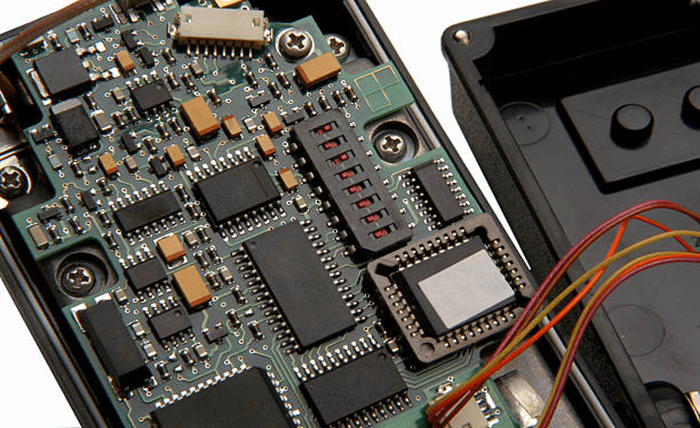In the dynamic landscape of modern communication, the seamless flow of information is paramount. Wireless communication, in particular, has become an integral part of our daily lives, powering everything from smartphones to smart homes. Behind the scenes, Radio Frequency (RF) interconnects play a crucial role in ensuring that the invisible threads of connectivity are woven together seamlessly. In this article, we delve into the world of RF interconnects, exploring their significance, applications, and how they bridge the wireless gap in the realm of modern communication.
Understanding RF Interconnects
1. What are RF Interconnects?
At the core of wireless communication systems are RF interconnects, which serve as the conduits for radio frequency signals. These interconnects facilitate the transfer of data between various wholesale electronic components of a wireless system, allowing devices to communicate wirelessly. RF interconnects encompass a wide range of components, including cables, connectors, antennas, and other transmission line elements.
2. Types of RF Interconnects
- Coaxial Cables: Widely used in RF applications, coaxial cables consist of a central conductor, insulating material, and an outer conductor. This design minimizes signal interference, making coaxial cables suitable for high-frequency transmission.
- Connectors: RF connectors come in various types, such as SMA, BNC, and N-type connectors. The choice of connector depends on factors like frequency range, power handling capabilities, and environmental considerations.
- Antennas: Antennas are crucial RF components that convert electrical signals into radio waves for transmission and vice versa. Different types of antennas, such as dipole and patch antennas, cater to specific applications and frequency ranges.
- Transmission Lines: Transmission lines, like microstrip and coaxial lines, guide RF signals from one point to another. The choice of transmission line depends on factors such as impedance matching and signal attenuation.
Applications of RF Interconnects
1. Wireless Communication Devices
- Smartphones: The ubiquity of smartphones relies heavily on RF interconnects, enabling wireless communication, mobile data, and connectivity to various networks.
- Wi-Fi Routers: RF interconnects play a vital role in linking devices to Wi-Fi networks, facilitating high-speed internet access within homes and businesses.
2. Satellite Communication
- Global Positioning System (GPS): Satellite-based navigation systems heavily rely on RF interconnects to ensure accurate and real-time location data.
- Earth Observation Satellites: RF interconnects are instrumental in transmitting data collected by Earth observation satellites, aiding in weather forecasting, environmental monitoring, and disaster management.
3. Medical Applications
- Wireless Medical Devices: RF interconnects contribute to the wireless functionality of medical devices such as telemetry systems, implantable devices, and remote monitoring systems.
- Diagnostic Equipment: In medical imaging devices like MRI and CT scanners, RF interconnects are essential for transmitting signals and images wirelessly.
Advancements in RF Interconnect Technology
1. Miniaturization
The relentless drive towards smaller and more compact ic wholesale electronic devices has led to the miniaturization of RF interconnect components. This trend not only reduces the physical footprint of devices but also enhances portability and integration.
2. High-Frequency Capabilities
As the demand for higher data transfer rates and bandwidth increases, RF interconnects are evolving to operate at higher frequencies. This enables faster and more efficient wireless communication, supporting applications like 5G networks and beyond.
3. Enhanced Reliability
In mission-critical applications such as aerospace and defense, the reliability of RF interconnects is paramount. Advancements in materials and manufacturing techniques contribute to improved durability, ensuring seamless communication even in challenging environments.
The Future of RF Interconnects
1. 6G Technology
As the world anticipates the rollout of 6G technology, RF interconnects will play a pivotal role in enabling unprecedented data speeds and connectivity. The ability to handle higher frequencies and data rates will be crucial in supporting emerging technologies such as augmented reality, virtual reality, and the Internet of Things (IoT).
2. Integration with Emerging Technologies
RF interconnects will continue to integrate with emerging technologies, such as edge computing and artificial intelligence. This synergy will result in more intelligent and adaptive wireless communication systems, enhancing overall efficiency and performance.
Conclusion
In the ever-evolving landscape of modern communication, RF interconnects serve as the unsung heroes, bridging the wireless gap that enables seamless connectivity. From the palm-sized smartphone to the vastness of satellite communication, RF interconnects play a pivotal role in shaping our connected world. As technology advances, these invisible threads will continue to evolve, ushering in an era of even faster, more reliable, and efficient wireless communication. The future holds exciting possibilities as RF interconnects pave the way for the next generation of wireless connectivity.

